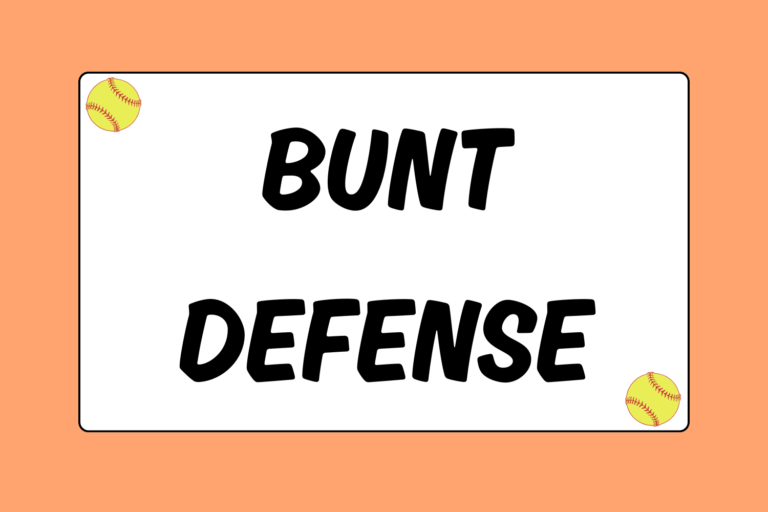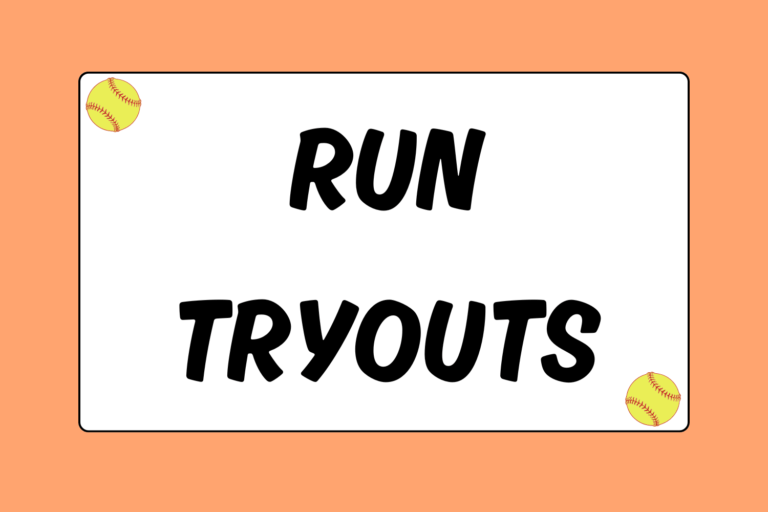In order to play your best, you need to be adequately equipped before stepping onto the field. Without proper equipment, injuries are likely to happen and player performance may start to unravel. Don’t worry, though! This guide covers softball’s basic gear so any new player can hop on board and join the ever-expanding softball community.
Look Sharp, Play Smart
Certain equipment should be in your bat bag at all times. You can’t play your best if you don’t have the right tools to work with!
Gloves & Mitts
Perhaps the most important piece of equipment you’ll ever own as a softball player is your glove. You can find a decent glove in any price range; just remember that you’ll get the quality you pay for.
Make sure you are using the correct type of glove. Special mitts are used by catchers and first basemen. Also, infield gloves are often much shorter than outfield gloves for faster ball handling. For more information, check out the our softball guide, “How to Choose a Softball Glove” (link to the right).
Cleats
Though smooth-soled shoes are allowed, you’ll want a comfortable pair of cleats for the best traction on the field. Cleats are generally hard rubber that is either molded or screwed into the sole of the shoe.
Metal cleats are not allowed in youth softball or co-ed slow pitch. If you have weak ankles, a pair of high-top cleats will offer the most support. Whichever style you prefer, make sure your cleats are comfortable since you’ll be spending long hours on your feet.
Bat
You’ll need a good bat for the offensive part of the game. Bat lengths may not exceed 34 inches or be wider than 2¼ inches in diameter. The drop limit (length minus width) is –12 in fastpitch softball, while the minimum drop is –8.
In today’s offensive era, composite bats dominate the market, replacing the now scarcely-found aluminum bats. If you are testing out a new bat, find a local cage where you can take some swings. If you’re solid in the cages, you should be just as solid on the field.
Helmet
Helmets are absolutely necessary, and need to be worn anytime there is a bat in your hands during practice or in games. Official ASA rules require every helmet to be equipped with a mask. This isn’t to obscure your vision; rather, it’s to protect your face.
Softball pitching is particularly unique because it can rise from a short distance at extremely high velocities. A mask prevents the ball from rising into your face. Every batter, on-deck batter, runner, or player assuming the role of base coach must wear a helmet that is neither cracked nor dented.
Batting Gloves
Batting practice requires constant swinging, and it isn’t uncommon to take at least 100 swings in a given day. Batting gloves can prevent your hands from wearing out and developing calluses.
Batting gloves also help on the base paths. Whether you are sliding or diving, your hands drag on the dirt, so batting gloves provide protection against abrasions.
The Uniform
No part of a softball uniform is worn without purpose. Every piece of clothing has a function, which, in many cases, is to keep you safe while you play.
Pants or Shorts
Softball used to dress its players primarily in shorts and knee pads. Nowadays, baseball pants have migrated onto softball diamonds, and are now the standard bottoms for softball uniforms.
- Pants: Baseball pants are generally worn without external knee pads. Players rely on their socks and pant legs, which have extra cloth around the knee for added support, to protect their legs when they slide and dive.
- Shorts: Shorts are generally worn with both sliding shorts (compression shorts with added padding on the thighs) and knee pads (foam pads worn around the knee). Both the sliding shorts and knee pads protect your skin from being exposed and vulnerable to injury.
- High socks: Socks add as protection against abrasions to the lower leg when sliding and diving.
Catcher’s Gear
Catchers have an extensive amount of gear that provides ample protection against stray balls, wild pitches, and even incoming players:
- Catcher’s mask: Softball catchers have transitioned to using masks that are styled after those worn by hockey goalies. They protect the catcher’s head, face, and throat (with a throat guard).
- Mitt: Catcher’s mitts are special because there is no distinct separation for the fingers. The mitt has extra padding around the circumference to provide a buffer between the catcher’s hand and high speed pitches.
- Chest protector: Chest protectors protect the catcher’s body from the impact of a pitch or a foul ball. They are often made of padded foam or gel.
- Shin guards: Made of durable plastic, shin guards protect a catcher’s legs from the impact of pitches, wild throws, and players sliding into home plate. Most shin guards have extra segments that cover the toes for added protection.
- Knee savers: Knee savers are optional pieces of equipment that were created to reduce knee problems. Catchers squat the entire time on defense, which can quickly wear down the ligaments in the knee. Knee savers are special wedge-shaped pads that fill the gap between the hamstrings and calves when catchers squat to provide support and comfort.
Extra Items for Your Bag
Besides the mandatory gear, there are plenty of accessories and additional equipment that contribute to player performance:
- Defensive face mask: Any defensive player, including the pitcher, may wear an approved plastic face mask/guard. They must be whole, without any cracks or deformities, and have all the proper padding.
- Extra shoe string: One of the worst things to have happen in the middle of a game is for your shoe strings to break. If this happens, and you don’t have a back-up, you’ll end up having to tie your cleats in an awkward spot or be taken out of the game because you cannot wear them. Pack an extra. It may seem silly, but it’s a life saver!
- Sunscreen: The sun drains your energy, not to mention the damage it can do to your skin if you’re unprotected. Make sure to have adequate sun block to protect you against the harm of the sun’s rays.
- Sun & glare protection: Whether you prefer caps, visors, sunglasses, or eye black, you need something in your bat bag that will shield your eyes from the sun.
- Cold weather gear: Keeping your body warm is one of the most important things you can do to prevent injuries. Long sleeves, leggings, jackets, sweatshirts, and even gloves will help keep you warm when you aren’t out in the field or warming up.
- Extra socks: Early morning games generally call for dewy fields. If you have an extra pair of socks in your bag, you can remedy your feet from damp socks and wet cleats.
- Ribbons, bows, & more: The list for what to bring in your bat bag does not end here. Whether it’s a lucky charm, a superstitious hair band, or anything else — make your bat bag reflect you!
Bring Your “A” Game
Come ready to play and you’ll be ready to win! It’s a whole lot easier to focus on your performance instead of figuring out how to compensate for missing equipment. Be prepared. You’ll feel more comfortable using your own equipment instead of having to borrow a missing piece that doesn’t fit quite right.
You aren’t on the field to look good; you are there to play. As long as your performance is sharp, you’ll look sharp too!





